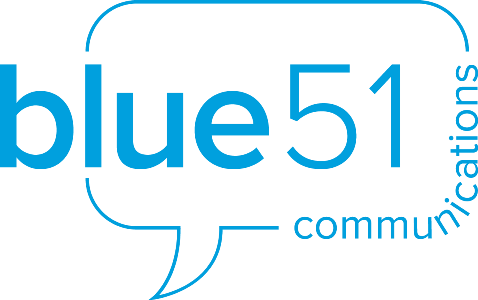Content marketing is incredibly powerful because it builds connections over time. As you share your message through clever content, people get to know you through the stories you tell and the expertise you share. But – is it you?
Dr Maya Angelou said it best:
‘I’ve learned that people will forget what you said, people will forget what you did, but people will never forget how you made them feel.’
To me, in the context of writing for a brand, this speaks to voice.
Have you ever met someone you’ve been following online in real life? They’re all warm and funny online and feel like your bestie. Then you meet them in real life and all the sparkle and je ne sais quoi? Not a hint!
And likewise, you meet someone in real life. They’re lovely! They’re clearly smart and engaging, but when you read their content, it’s like a grade six essay with no personality. It’s cold and more than a little boring.
Our number one goal for content, particularly the content we’re writing for our business or brand, is alignment and cohesiveness. We want the content to match the person or the brand. The critical foundation to do this is to know your brand and know your brand’s voice. There are a number of ways to do so, and when I work with clients, I establish a tone of voice style guide, not unlike a visual style guide that sets out the dos and absolutely do nots around colours and fonts, for example.
A kind of left of centre approach to this, which has guided my writing and brand overall, as well as those of many other people, is Nicole Vine’s style statement exercise that helps articulate a brand. My statement lives right beside my monitor to guide everything that leaves the Blue51 copy desk. It details what I want to be known for, ‘I’ being me, personally, as well as Blue51. Nicole’s process is about finding the adjectives that resonate most with you as an individual BUT in the context of the work you do and who you do it for. Go work with her; she’ll guide you through it and leave you a shimmering, shining beacon, but to give a concrete example of brand statements, think about a bank. Yep, a (potentially bat poo boring) conservative brand. Their voice will be all about stability, loyalty, and honesty. Now, picture a bank that’s a bit different, perhaps not one of the big four. They might be leaning more towards innovation, responsiveness and creativity. These words will guide content creation.
This is all about the audience and finding the right fit for them. I work with incredibly smart people doing incredibly transformational work out in the world. If I were to greet my audience via content with a ‘how’s ‘em hangin’?’ type greeting, I’d sound like a juice bar, not an insightful and experienced communications and writing expert who helps people tell their story and shine a spotlight via communications to grow their brand. My Blue51 brand voice (and my personal brand by default is all about vibrance and accessibility (aka not pretentious); I can be funny and clever. ‘Clever’ is the operative word here. I do this via writing techniques and strategies that echo and evoke this, including language choice. Imagine an engineer wanting to connect with non-engineers. Their colleagues will be ok with an engineer’s jargon, but their audience may find their language heavy, dense or impenetrable.

So, the key to writing in the right tone and voice is to know your brand and know your audience. Sounds simple, yeah? Yes and no.
Here are some ways to make it easier:
That style statement I mentioned earlier? Make one for your brand. List all the words evocative of your brand and all the words that you don’t want to be included. Refer to it whenever you’re editing your pieces. Editing is magic when it comes to adding voice and tone- some people struggle with it in the drafting process, and that’s absolutely fine. You can’t edit an empty page, after all. Write, then add the (brand appropriate) writing tone of voice glitter.
The other way is through sheer practice. The more you write, the better you get. This is where free association writing (or morning pages for the Julia Cameron fans) is really good. Set the timer for 10 minutes and just write. There’s no stopping and starting again, which means if you struggle with paralysis by analysis when writing, you can shift your focus to the process and practice of simply getting your thoughts out. This also improves your ability to write as you speak, which, as I touched upon earlier, is an obstacle for some people – when they’re writing something, they’ll slip into their ‘best’ voice or essay speak, evident in their lack of contractions. For example, not many people say ‘do not’ when they speak. They say ‘don’t’.
Again, this is why the revision process is so powerful – that’s where you’ll spot these things. One of the best ways to spot them is to read out loud and listen for clunks. The second your tongue trips over something, you know your voice is out. I know some copywriters out there suggest using a read aloud feature in their word processing software. I don’t prescribe to this. It’s not the same as using your own tongue to get something out.
The final way to add voice and tone to content is to have some passion for what you’re writing. Let’s face it, we all know that feeling when we’re sitting down to write something, yet it’s not coming out. It’s not flowing. It’s usually because we’re over it and we’re bored by it. So can you find ways to reignite that spark or relight that flame and ignite a passion? That will help the tone of voice immeasurably.
Tell me, do you struggle to write like you speak? Does your ‘voice’ sound not you? Why don’t we have a catch up to see how I could be of support?
I love writing about communications, writing, life in business and life in general! If there’s something specific you’d like me to cover in my writing, please shoot me an email or give me a buzz, and I’ll do my best to help or address it in an upcoming blog post or on my social media platforms.
